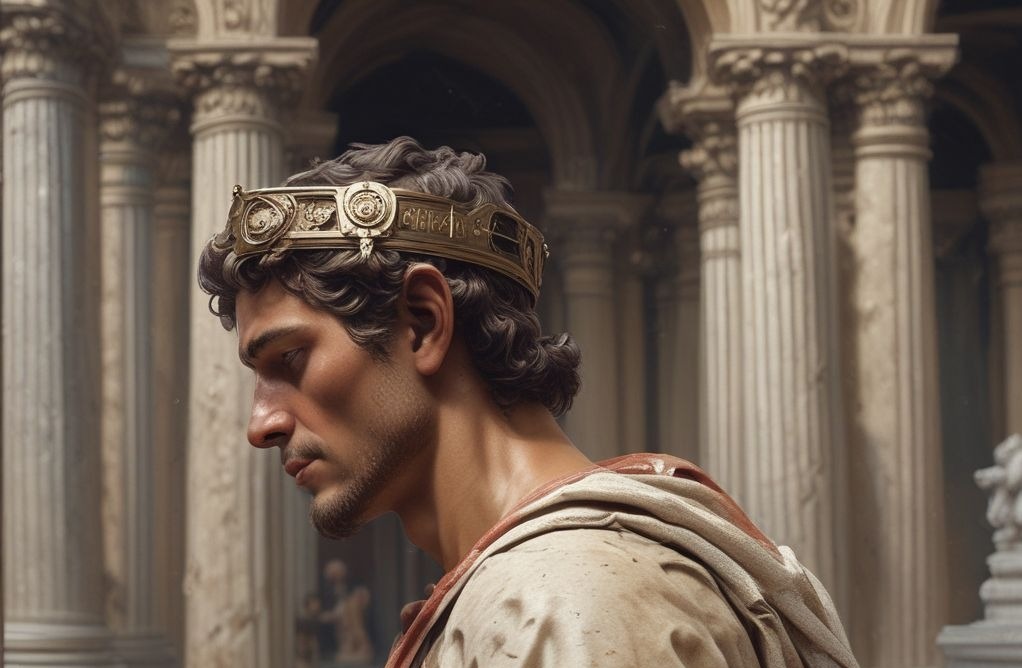AI Meets Ancient Rome
In 2025, AI breakthroughs are uncovering Ancient Roman secrets like never before. From virtually un‑wrapping scrolls buried by Vesuvius to reconstructing eroded Latin inscriptions, these innovations illuminate Roman history with precision. With a focus on AI innovation.
AI Tools Driving Roman Discoveries
Aeneas: Deciphering Roman Inscriptions
-
Developed by Google DeepMind in collaboration with historians from Nottingham and Oxford, Aeneas is an AI system trained on nearly 200,000 Latin inscriptions (about 16 million characters).
-
It can fill missing words, predict when and where an inscription was carved, and link fragments by linguistic patterns across the Roman provinces.
-
In trials, 23 historians found Aeneas helpful in 90% of cases of interpretation, greatly speeding up what once took weeks or months.
-
A highlight: analysis of the Res Gestae Divi Augusti revealed previously unnoticed parallels with legal and political texts.
Vesuvius Challenge: Reading Burned Scrolls
-
Hundreds of charred papyrus scrolls from Herculaneum, buried by Vesuvius in AD 79, were virtually un‑rolled and read using 3D X‑ray scanning and AI.
-
A team of students won a $700,000 prize by decoding over 2,000 Greek letters from scroll PHerc.172, revealing Epicurean philosophical texts by Philodemus.
How AI Innovation Works
Technology Behind the Tools
| AI Tool | Function | Output Example |
|---|---|---|
| Aeneas | Text + visual inputs → dating, context, missing words | Prediction of origin/date within 13 years, reconstruction of inscriptions |
| AI & 3D X‑ray | Virtual unrolling of charred papyrus | Revealed readable Greek letters and new philosophical fragments |
-
AI uses generative neural networks, computer vision, pattern recognition, and deep learning to interpret fragments and visuals.
-
Remote sensing techniques like satellite imagery, LiDAR, shadow‑mark detection, combined with AI, help locate lost Roman structures.
-
Virtual reconstructions (e.g. mausoleum of Maxentius, Roman landscapes) enhanced by immersive analytics and VR make ancient sites easily explorable in digital form.
Actionable Insights and Real‑World Examples
Insight 1: Democratizing Classical Scholarship
-
With Aeneas, scholars anywhere—even without large libraries—can accurately interpret Latin inscriptions using minimal expertise.
-
This opens access to ancient history for students, scholars, and enthusiasts globally.
Insight 2: Faster Archaeological Research
-
What once took months now takes seconds—Aeneas can contextualize and reconstruct inscriptions swiftly.
-
AI virtual‑unwrapping of scrolls avoids destructive methods and yields detailed text for further analysis.
Insight 3: New Historical Knowledge
-
Decoded scrolls have revealed philosophical writings on pleasure, scarcity, and daily life in Roman times, shedding light on Epicurean thought.
-
Aeneas has shown hidden linguistic influence between inscriptions from different provinces—helping map cultural networks across ancient Rome.
Summary Table
| Discovery Area | AI Innovation | Impact |
|---|---|---|
| Latin inscriptions | Aeneas AI model | Reconstructed fragmentary text, context, dating |
| Burned Herculaneum scrolls | 3D virtual unwrapping + AI | Read previously lost Greek writings |
| Site detection & landscape | Satellite + LiDAR + shadow AI | Identifies hidden structures |
| Virtual reconstructions | Immersive analytics, 3D VR | Interactive Historical learning |
Real‑world Example: Res Gestae Divi Augusti
When historians used Aeneas to analyze the Res Gestae, AI identified linguistic parallels with Roman legal texts, highlighting an imperial political discourse previously unnoticed. This led to new interpretations of Augustus’s political messaging and public image strategy.
Why It Matters for Indian Readers
-
India’s own archaeological heritage (e.g., Sanchi, Harappan scripts) may benefit from similar AI tools in future.
-
Understanding how AI reconstructs ancient texts and structures abroad offers inspiration for local digital humanities.
-
The democratization of access to ancient knowledge aligns with India’s growing interest in edutech, history, and tech‑driven research.
Strong Conclusion & Call to Action
The fusion of AI innovation and archaeology in 2025 brings to light ancient Roman secrets once hidden for centuries. Whether it’s reconstructing Latin inscriptions with Aeneas or virtually un‑rolling charred scrolls from Herculaneum, AI is rewriting how we explore history.
If you’re a history enthusiast, student, or content creator, these insights offer a powerful example: AI can amplify human expertise and broaden access to ancient knowledge. Consider exploring partnerships, academic use, or digital storytelling platforms to bring more historic discoveries to light.
Call to Action:
Curious to see AI reconstruction in action or explore new Roman texts? Leave a comment or subscribe to updates—embrace the future of archaeology and be part of uncovering the past.
